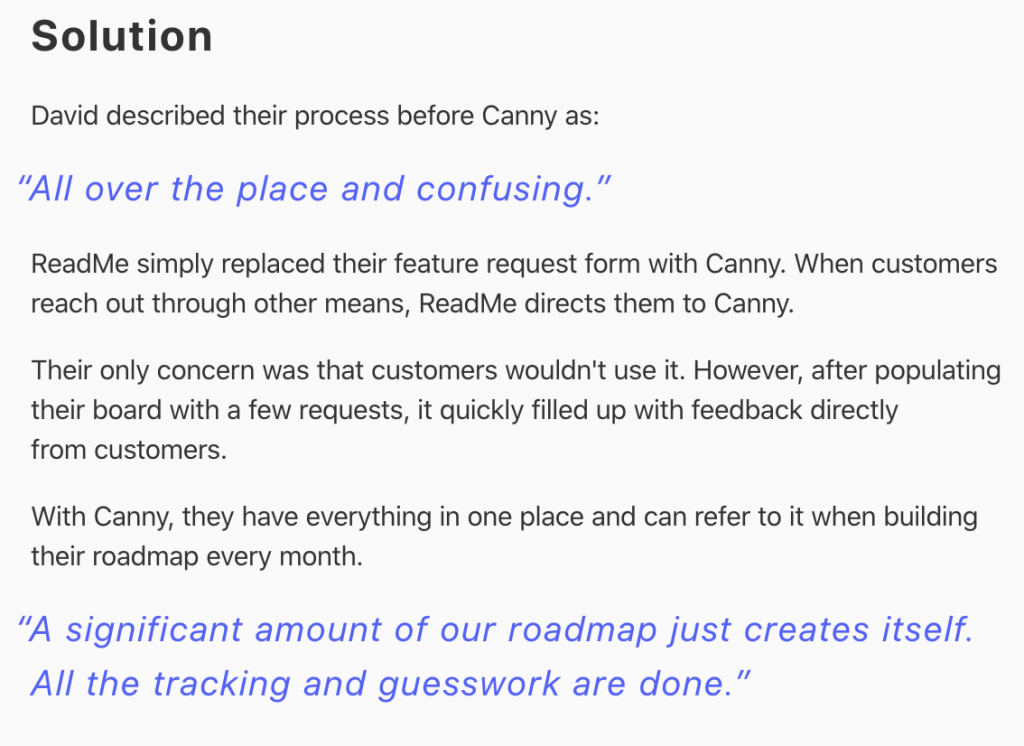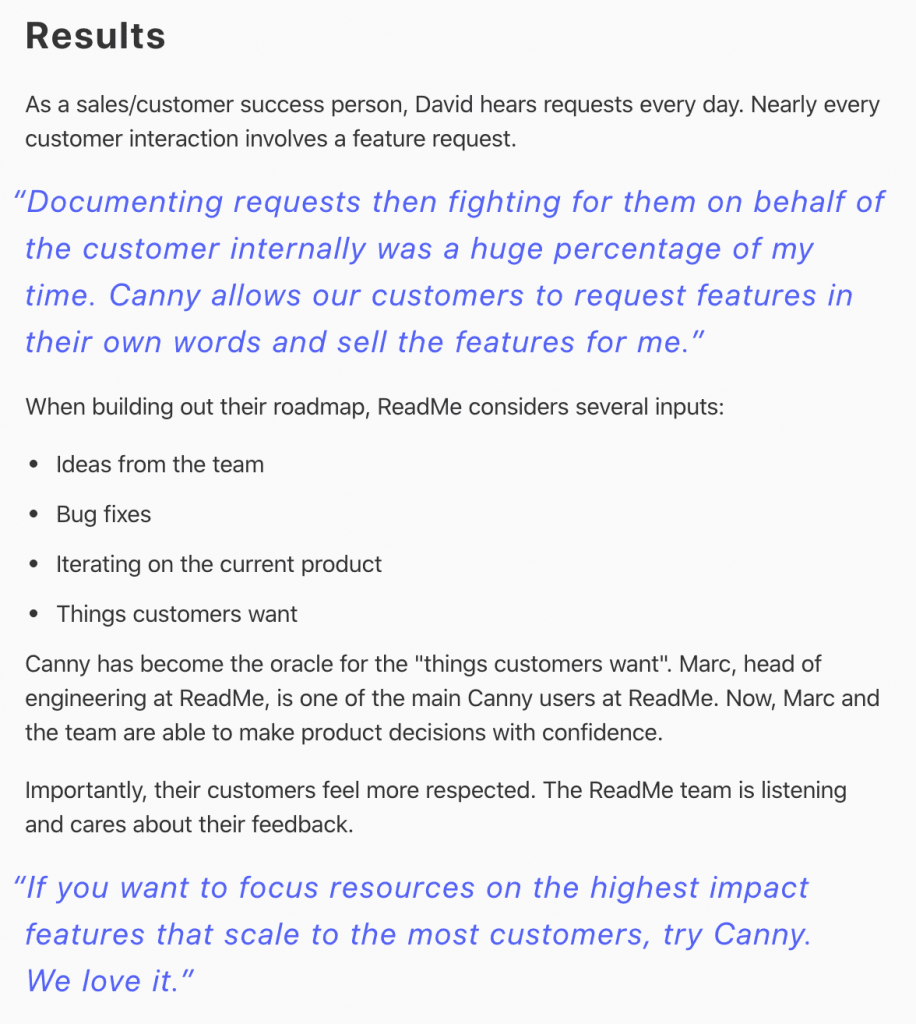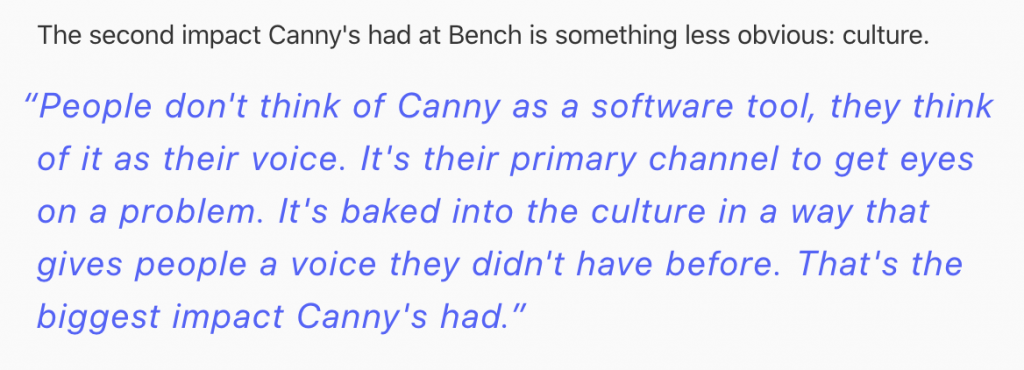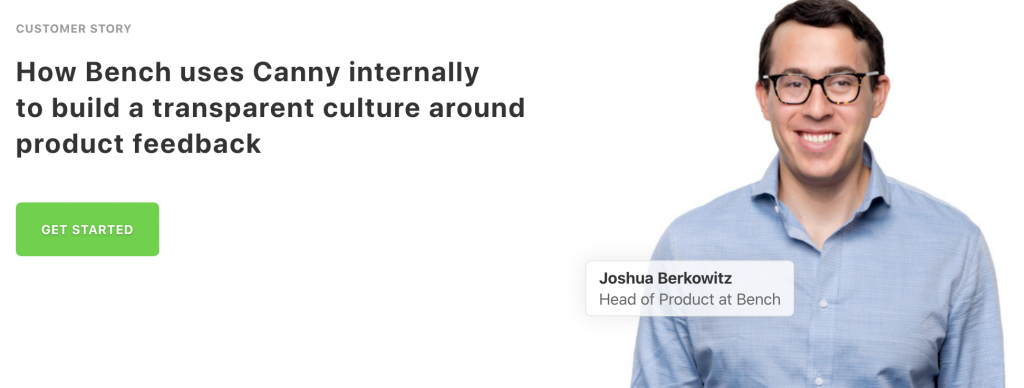Case studies are one of the best ways to communicate product value to potential customers.
A well-done case study:
- Creates trust (recommendations from third parties are always more reliable than what the company itself claims)
- Provides social proof—in a situation where a potential customer isn’t sure what to do, they assume that others around them have more knowledge
- Gives more information about the product—you can’t fit everything onto your features page
- Creates a sense of “I can relate to this”, if the case study is for a company in the same space
- Allows you to target your marketing better towards much narrower customer groups, meaning a much more personalized experience
However, good case studies take time and commitment. You can’t just put together a case study based on any customer, in any format, and at any time.
Here are some tips for effective case studies that you can use for targeting, marketing communications, customer success, search optimization, and more.
Create niche studies for separate target groups
Even if your business has one specific main target group, it still probably has different verticals of customers under it. At the very least, you definitely have various strong use cases for your product.
For example—if your main target group is SMBs, you still have:
- SMBs that do retail
- SMBs that do online sales
- SMBs that do software
…and so on.
The effectiveness of case studies comes largely from the relatability aspect of them.
Imagine doing research for a software solution you need. If you immediately see a case study for another company with a use case nearly identical to yours, you will:
- Get a lot of extra information without having to reach out to the company
- Be immediately assured that the product is suitable for your specific use case
And, on the flip side, if you’re doing research and the available case studies are wildly different from what you need, it might be a red flag for you.

This means that the most effective case studies are the ones that are the most heavily tailored for your most desired target group(s).
There’s no point in doing a case study for edge case customers who you aren’t actively pursuing.
Try to figure out all the different main use cases that exist within your ideal customer target group, and build case studies for all (or most) of them.
This way, you can build the most in-depth rapport with your ideal customers. It’s great ammo for effective success/sales processes, and saves you time on tailoring communication on the spot.
Choose your case study candidates wisely
Besides making sure you have a good range of different case studies, it’s also important to be picky about who the selected ones are.
You obviously value all of your customers. However, some of them are definitely more useful than others when it comes to communicating your value.
After you have picked the target groups you’d like case studies for, make sure you pick customers who:
- Use the product often and have used it recently. This guarantees that they’re up to date with any new features you have, the current design, recent changes, etc. Having an outdated opinion isn’t very useful.
- Have seen solid results from using your product. Oftentimes, the customers who have been most impressed with your product will let you know about it by reaching out. Make a list of these people as soon as you communicate with them, for easy reaching out later.
- Are truly enthusiastic about your product—again, these people usually reach out and express their joy.
- Are at least relatively well-known in their space (if possible).
Whereas most users are efficient at being your customers, they might not be efficient at communicating your product value to the outside world.
Pick and choose the people who are most qualified, excited, able, and constructive, and you’ll be able to create the most informative and valuable case studies.
Focus on value first
Case studies communicate nothing if the only message is “yes, this product is “good””.
It’s important that your case studies focus on the value your product has offered a customer—and therefore can offer to others, too.
For example, Canny’s case studies consist of three parts—challenge, solution, and results.
Here’s what that looks like in the case study for ReadMe, one of our customers:
Challenge
The challenge describes what the company was struggling with before they chose Canny.

Solution
The solution explains how Canny solved the issue they were having before.

Results
The results highlight the real value the customer has seen from using Canny.

The most important thing here is, again, focusing on value. Value is what customers are signing up for and handing their money over to you for.
The more you can emphasize that in your case studies, the better. Ideally, you would be able to show clear ROI with actual numbers—e.g “increased conversions by x”.
It’s a simple principle of social proof—“If another company like mine is getting value from this product, so can I”.
Pay attention to formatting and design
Case studies are an excellent source of information, but they need to be easy to digest.
With the abundance of information already available for any product out there, nobody has time to read through pages of text walls in addition.
Try to format your studies in an easy-to-consume way:
- As with any piece of content, use headings and bulleted lists to break up text
- The three-step solution we mentioned above is a good start for sectioning your proof
- Use as many easy-to-understand visuals as possible
A few additional tips
Since case studies are mostly meant for creating a feeling of recognition, add the company’s “profile” in an easy to spot place.
This way, people browsing the studies will know if they’re in a similar position as the highlighted company, even if they haven’t heard of it before.

Make the most important things stand out for quick browsing. If someone is just glancing over the page, they’ll be drawn to the highlights of the case study.
This includes strong statements, direct quotes that make a point, and any other value “evidence” one-liners straight from the customer.

Add plenty of CTA’s—your case study pages should still be built for conversion.

Give your potential customers easy access to start a trial or use the product if they decide to.
Spend some time and effort on creating impactful case studies
As much as you would like to get some social proof out there ASAP, waiting a little and putting effort into case studies is worth it.
Mediocre studies on not-so-ideal customers aren’t going to be detailed or useful enough, nor provide the proof of value you’re looking for.
Focus on planning for and discussing your target audiences, providing a variety of cases, and optimizing design and copy.
You’ll have proof of value out there for everyone to see, and save some time for yourself and your potential customers.







Awesome post! Keep up the great work! 🙂
Thanks for the heads up on the benefit of product case studies.
Informative article, totally what I was looking for.